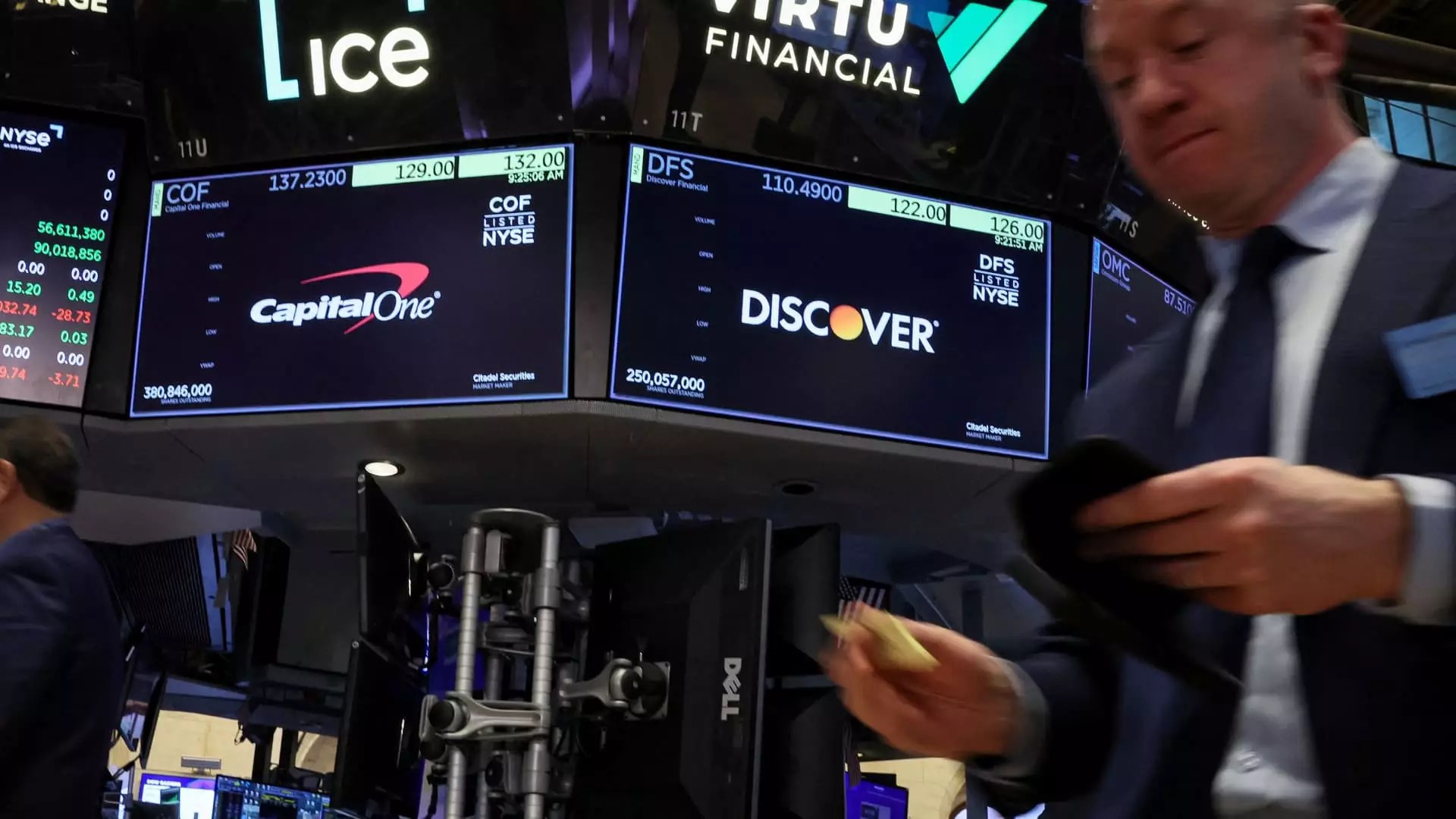The recent approval from regulators for Capital One’s monumental $35 billion acquisition of Discover Financial is a watershed moment in the contemporary finance sector. While on the surface, this merger appears to be a routine corporate expansion, a closer look reveals that it holds implications that can fundamentally reshape how banks operate in a post-Trump regulatory era. What could be interpreted as just another corporate transaction is, in fact, a potentially groundbreaking development for investment banking and consumer finance alike.
This approval process, facilitated by the Federal Reserve and the Office of the Comptroller of the Currency, signifies a strikingly permissive regulatory environment. Under this administration, we’ve witnessed a shift away from the stringent controls that characterized the previous decade, an era when colossal mergers were often sidelined due to apprehensions over antitrust violations and systemic risk. The ramifications of a loosening grip on regulations are astounding—banking titans like Goldman Sachs, which thrives on advising high-stakes mergers and acquisitions, are likely to see a revitalization in their operations as well.
The Merger’s Ripple Effects
Analysts from Wells Fargo have labeled this acquisition a “clearing event,” hinting at a tide of impending consolidation within the banking sector. The industry buzz is that this merger could unlock a broader landscape of collaborative opportunities among banks, giving rise to a culture where mergers are no longer a far-fetched dream but rather the new status quo. Investors should perceive this merger not merely as an addition of Discover’s assets to Capital One’s portfolio, but as a precursor to an environment ripe for further consolidation.
However, it’s imperative not to view this approval through rose-tinted glasses. There are considerable challenges on the horizon, particularly regarding the convoluted nature of economic policy under the current administration. Though Capital One’s acquisition should bolster its earnings potential, precarious macroeconomic factors, including trade tensions and potential tariffs, loom large. Investors must remain vigilant as these external pressures could pose constraints on growth, despite the encouraging regulatory shifts.
The Future of Investment Banking
With the approval of this acquisition, Capital One stands at a precipice of opportunity, likely witnessing a significant enhancement in its earnings trajectory. Wells Fargo’s analysts have postulated that this deal will create a buffer that allows Capital One to navigate possible economic downturns with greater stability. This conviction consequently fuels a sense of optimism among investors and signals a budding revival for the investment banking landscape, specifically the advisory services that Wealth Management firms render.
However, does this mean we should expect a rush of IPOs and large-scale M&A activities to return to their pre-2017 fervor? The optimism should be tempered. Even with a friendlier regulatory backdrop, uncertainties surrounding tariffs have made corporate clients wary. As Goldman Sachs CEO David Solomon candidly remarked, the current climate is fraught with “significant near-term and longer-term uncertainty,” which can severely dampen investment activity. The stock market’s volatility exacerbates this situation; the initial excitement surrounding the Capital One merger has rapidly faded, reflecting a market still in reference to the larger economic winds.
Why Capital One’s Move Is Critical for Consumer Banking
For the average consumer, what does Capital One’s acquisition of Discover truly mean? It is crucial to recognize that this merger pivots on the vast payment architecture that will flow from the union of these two financial entities. By acquiring Discover, Capital One arms itself with an entire payment network that lessens its reliance on industry behemoths Mastercard and Visa. This could introduce competitive pricing and innovative offerings, which would ultimately benefit consumers.
Moreover, the implications extend to how financial technologies are utilized by these companies. With Capital One’s eye on expanding its stake in the fintech sector, consumers can expect superior services and more diverse options in their banking experiences. In a period where consumers are increasingly leaning toward digital solutions, Capital One’s burgeoning dominance in online and mobile banking will be a distinct advantage.
Though challenges abound, this merger is much more than a simple addition of resources. It is a concerted effort toward redefining what banks can achieve together, especially in a transformative age defined by rapid technological advancements and shifting consumer preferences.
Consolidation: The New Normal?
The Capital One-Discover merger is not just a blip on the financial radar; it’s indicative of a growing trend toward consolidation in the banking sector that may stand to redefine our financial landscape. As banks grow larger, the array of services available to consumers is bound to expand—albeit, with the caveat that larger entities may also present new monopolistic challenges that need to be critically examined.
Investors would do well to grapple with the multifaceted implications this merger harbors, contemplating both the burgeoning opportunities it presents as well as the perils that may accompany such concentrated power within the financial industry. Regulatory watchdogs will play a vital role in ensuring that this consolidation doesn’t morph into a stranglehold over the marketplace. As we embark on this new chapter for Capital One, it’s appropriate for stakeholders to remain keenly aware of these dynamics as they unfold.


Leave a Reply